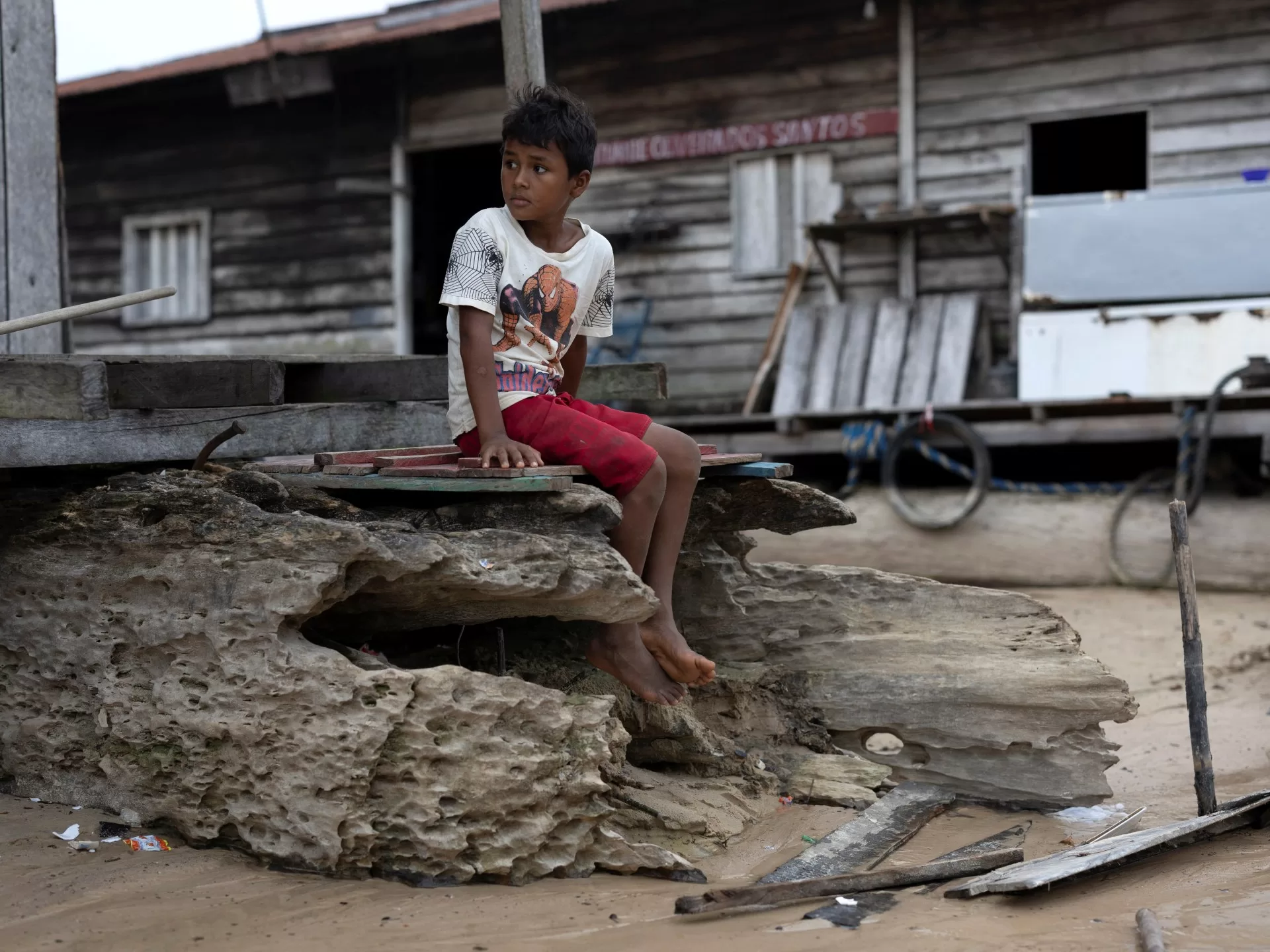UNICEF chief urges leaders at the upcoming COP29 summit in Azerbaijan to increase climate financing for children.
More than 420,000 children in the Amazon basin have been affected by “dangerous levels” of water scarcity and drought in three countries, according to the United Nations.
The record-breaking drought, ongoing since last year, is taking a toll on Indigenous and other communities in Brazil, Colombia and Peru reliant on boat connections, the UN Children’s Fund (UNICEF) said ahead of the COP29 climate change summit in Baku, Azerbaijan.
“We are witnessing the devastation of an essential ecosystem that families rely on, leaving many children without access to adequate food, water, health care and schools,” UNICEF Executive Director Catherine Russell said in a statement on Thursday.
“We must mitigate the effects of extreme climate crises to protect children today and future generations. The health of the Amazon affects the health of us all.”
The UN agency called on leaders to deliver critical actions, including “a dramatic increase” in climate financing for children.
The resulting food insecurity in the Amazon increased the risk of child malnutrition, it said, while less access to drinking water could spur a rise in infectious diseases among children.
In Brazil’s Amazon region alone, more than 1,700 schools and 760 medical clinics had to close or became inaccessible because of low river levels.
In Colombia’s Amazon, lack of drinking water and food forced 130 schools to suspend classes. In Peru, more than 50 clinics were inaccessible.
UNICEF said it needs $10m in the coming months to help the stricken communities in those three countries, including by providing water and sending out health brigades.
Weather observation agencies such as United States space agency NASA’s Earth Observatory and the European Union’s Copernicus Climate Change Service say the drought across the Amazon basin since the latter half of last year was caused by the 2023-2024 El Nino climate phenomenon in the Pacific.
The insufficient rain and shrinking of the vital rainforest’s rivers exacerbated forest fires, disrupted hydroelectric power generation and dried out crops in parts of Brazil, Bolivia, Colombia, Ecuador, Peru and Venezuela.
Brazilian experts said the climate crisis was also to blame.
Despite the string of environmental setbacks across the Amazon, Brazil’s Environment Minister Marina Silva said it is “possible” for governments to “confront climate change”.
Silva made the statement on Wednesday after the government reported that deforestation in Brazil’s Amazon fell by about 30 percent in the 12 months through July compared with the same period a year prior – the smallest area destroyed in the world’s largest rainforest in nine years.
When he returned as Brazil’s president two years ago, Luiz Inacio Lula da Silva promised to step up enforcement of environmental laws to rein in deforestation, which had skyrocketed under his predecessor, Jair Bolsonaro.
“What was presented here today is the fruit of our labour,” Silva said.
In July, Brazil’s northwestern neighbour Colombia also reported a historic 36 percent decrease in deforestation in 2023.
